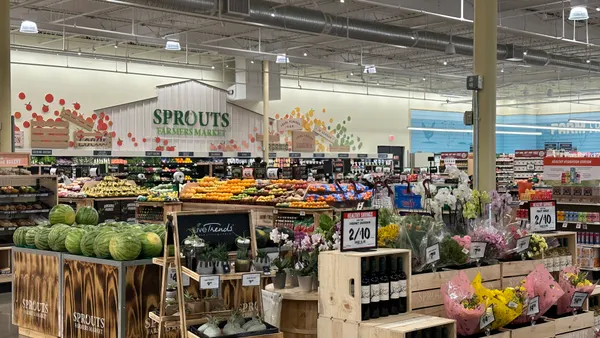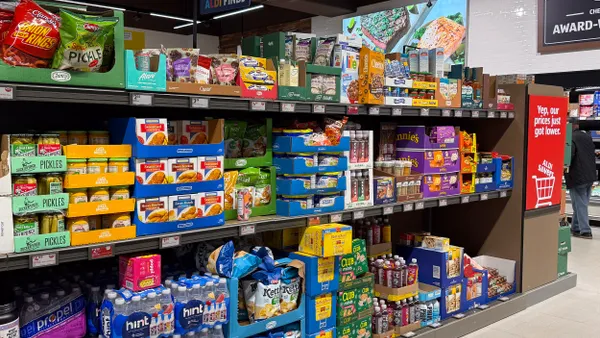Dive Brief:
- Grocery prices have steadily increased over the past five years and will continue to rise over the next one to two years, according to a new report from Acosta. The level of the increases varies across grocery categories with some of the biggest hikes affecting meat, seafood, deli, baby care, pet care and household care products.
- Manufacturers’ rising costs are the biggest cause for the increase with an average price bump of 7.8% in 2018 alone. The paper pulp industry has seen a 60% increase in the cost of hardwood, diesel has risen 19%, and there’s a widespread shortage of truck drivers to help distribute the massive amount of product. Despite the price hikes, competition in the food retail space remains fierce and 76% of retailers surveyed reported pushing back on or being hesitant to accept price hikes.
- A few categories are experiencing below average price increases, including dairy, alcohol, health and beauty, grocery, bakery and produce. In 2019, food prices are expected to rise but at a below average rate according to the U.S. Department of Agriculture's Food Price Outlook. Some categories like pork, fats and oils may even experience deflation. The gap between grocery store prices and restaurant items will continue to widen in 2019 at a projected 2% to 3% away-from-home inflation.
Dive Insight:
Retailers are caught between a rock and a hard place when it comes to tackling increasing grocery prices. Many are reluctant to raise prices for fear of losing shoppers to the competition, but not all of them can afford to eat the difference in-house.
“There’s no price elasticity in retail,” United Natural Foods Inc. CEO Steven Spinner said during the company's most recent earnings call. “In other words, the retailers are saying to the big manufacturers, don’t you dare pass through any price increase because we can’t pass it through, which means we have to eat it.”
However, prices will continue to increase for another one to two years according to Acosta, which means retailers have to find a strategy to cope with the higher costs while keeping customers happy.
Fortunately, there are a few ways they can soften the blow. Some of the most common mitigation tactics captured in Acosta’s survey include adding an economist to the staff and aligning with private label costs.
Understanding price elasticity and knowing exactly how much to raise prices is key to preventing customers from defecting, says the report. Although some retailers may be tempted to keep the price increases under wraps as much as possible, taking a transparent approach and providing reasons why the prices are increasing as well as evidence showing that other stores are increasing their prices too can prevent consumers from seeing if they can snag a better deal elsewhere.
The report also suggests adjustments for manufacturers, including providing pricing notifications about 90 to 100 days out and providing analysis after price increases to show product performance.
Retailers should avoid reducing packaging sizes, however. Fifty percent of shoppers surveyed for the report noticed when a package’s size shrunk while 80% were willing to accept the increase in price over a package size reduction. Changing up a product’s packaging can also create headaches for the distribution and logistics team, Acosta noted.









